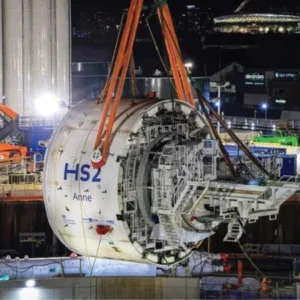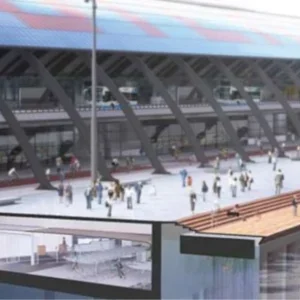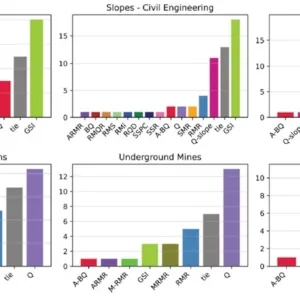In February 2002, the Traylor/ Shea/Frontier Kemper/Kenny JV submitted the lowest of three bids for the 5.3 mile (8.5km) extension of the ECIS project north to Eagle Rock. Against an Engineer’s estimate of $150.8 million, the JV’s bid of $162.15 million for the North East Interceptor Sewer (NEIS) was lower than the Affholder/Elmore JV bid of $164.5 million and the top bid of $179.3 million from the Obayashi/ Schmick JV. Continuing from the Mission/Jesse site shaft on ECIS, the 13ft o.d. (4mo.d.) (8ft (2.4m) i.d.) NEIS alignment will be excavated concurrently in three headings through varying soil conditions.
Design of the NEIS project was also completed in house by the City’s Department of Public Works Bureau of Engineering and assisted by a group of 15 consultants led by Jacobs Associates. The NEIS contract is scheduled for award by May 2002 with notice to proceed expected by June. The Traylor-led JV as the apparent lowest bidder is yet to announce supplier of the three TBMs required by the contract. Suppliers of the lining systems, as nominated in the bid, are the Traylor/Shea/ Ghazi JV for the primary precast concrete segments and Ameron for the inner carrier pipe.
Construction management for the NEIS contract is awarded as an extension of the ECIS management contract to the integrated team of City employees and staff from the Parsons Brinckerhoff Management Services/Brown & Root Services JV.
Once the ECIS and NEIS projects are completed the existing sewer will be decommissioned and rehabilitated to provide additional gravity flow sewer capacity from the LA city center to the treatment plant. Francis Fong, project leader for Jacobs, describes the challenges of NEIS.
The principal geologic units along the NEIS alignment include Holocene (Recent Alluvium) and Pleistocene (Lakewood & Older Alluvium) fluvial and alluvial soil deposits which consist of unconsolidated gravel, sand, silt and clay. Underlying are Pliocene sedimentary deposits of well-stratified siltstone and claystone in the Fernando Formation and interbedded sandstone in the Puente Formation Units 1 and 2. The Fernando Formation is a soil-like material with strengths similar to a hard silt or clay. The Puente Formation Units are lithologically similar but range from extremely weak to strong rock, Unit 2 being stronger with some strongly cemented beds. The NEIS tunnel will be excavated beneath an overburden of between 24m to 46m maximum and in three reaches.
The 2.8km Lower Reach from the Richmond shaft to the Mission/Jesse site ECIS connection, runs through Older Alluvium, Fernando and Puente Formation Unit 1 strata. Since the contact between the Older Alluvium and Fernando deposits is not well defined, the contractor should expect varying tunnel conditions, from slow raveling and flowing ground to firm ground, and possibly mixed face conditions through the southern half of the alignment. The majority of the Puente Unit 1 material is also expected to exhibit slow to fast raveling behavior.
The 2.4km Middle Reach will be excavated through Older Alluvium and two units of Puente Formation. The anticipated behavior of the stronger Puente Formation Unit 2 is slow to fast raveling to firm ground behavior, depending on the degree of cementation. Raveling to flowing ground is expected elsewhere along the Middle Reach.
The 3.3km Upper Reach is excavated entirely through Puente Formation Unit 2 and in conditions similar to the upstream segment of the Middle Reach. Tunneling in Puente Unit 2 along this reach will follow the strike of the bedding which could include steeply dipping joints resulting in blocky ground. In addition, the crown is fairly close in several areas to the Puente Formation/Older Alluvium contact increasing the risk of encountering flowing ground and crown instability.
The NEIS contract documents address several technical issues by either specifying the means and methods of construction or stating the performance requirements.
Related Files
NEIS Project Alignment






